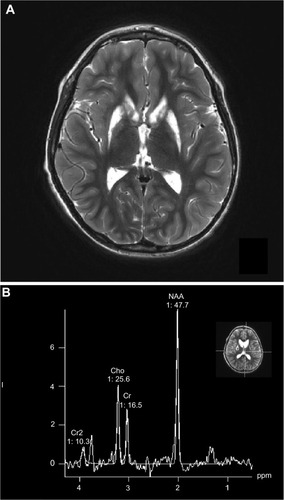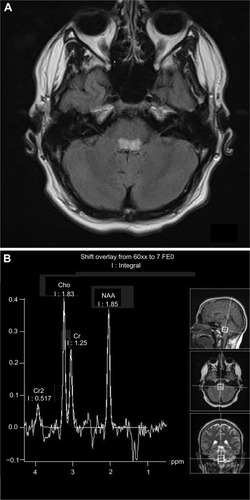Figures & data
Table 1 Clinical manifestations seen with Leigh syndrome patients
Table 2 Genes known to be associated with Leigh syndrome
Figure 1 Axial MRI scan (A) and MRS spectrum (B) of a 9-year old boy with Leigh syndrome due to a mutation in the mtDNA.

Figure 2 Axial MRI scan (A) and MRS spectrum (B) of a 17-year old male with Leigh syndrome due to a mutation in the mtDNA.

